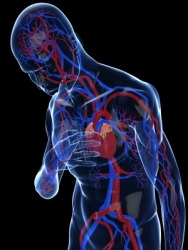The sevillana is a set of four separate
dances that form the core of a folk dance in Spain usually performed at ferias
or market festivals, wedding ceremonies, and other Spanish social events. As a
type of Spanish dance, it made to the dictionary of the Spanish language in
1884 after a long period of non-recognition by the Royal Spanish Academy. It
first emerged as a separate and distinct form in the latter part of 18th
century and as a variant of seguidillas, a form of Spanish song. In the 19th
century, it became part of Escuela Bolera, an approach to the formal study of
various regional Spanish dances, and of the repertoire for flamenco, another
dance style in Spain.
Sevillana is the only dance in Spain that is learned by
non-dancers but is now performed as a partner dance at the annual Feria de
Abril in Seville, in flamenco and other dance concerts or in tablaos or venues
for flamenco shows, and dance competitions in Spain and other parts of the
world. It has become so popular especially among couples of all ages, that each
town in Andalusia also holds weeklong ferias similar to Seville. The feria week
provides a man and his girl friend to court each other with the man asking her
to dance the sevillana with him.
The four sets of the dance cover the
primera, segunda, tercera and cuarta levels, each of which consists of three
verses or coplas. The first copla uses the paso de sevillana, which is a basic
step, followed by the second and third coplas which start with a connecting
step of one pasada and another of paso de sevillana, and then by verse step. A sevillana
dancer knows that the coplas have individual steps that incorporate
certain moves in a flamenco dance and the mainstream form like ballet. The
dance style can be evident in a couple dancing face-to-face to sevillana music
in a three-fourths beat. This music that accompanies the dancers is simple
unlike the song accompanying the dance which has various lyrics and themes.
Originally the song described the town folk’s daily life but also conveyed
criticisms and humorous tales and anecdotes. Through the centuries, song themes
were developed about love, religion, festivals and even Biblical stories to go
with the dance.
Learning how to dance the Sevillanas is
not as hard as some people may think. All they have to do is memorize certain
dance steps which are performed three times per movement and repeated five
times in succession. The steps also alternate between the start on the left and
right feet for five 6-beat music bars. Each of the two succeeding steps has the
dancer stepping to the left, tapping her right toe at the back of her left foot
and the left toe to face the right foot. You can also memorize dance steps by
practicing the dance to a melody of your choice, or watching someone else do
the dancing. You can simplify your dance practice by getting the order of the
movements and the dance rhythm. Better still record the steps which you can
memorize easily. Remember that when you start learning Sevillanas, you also
start learning flamenco because a certain level is easier to reach it and it
provides many possible occasions for its training and practice.















